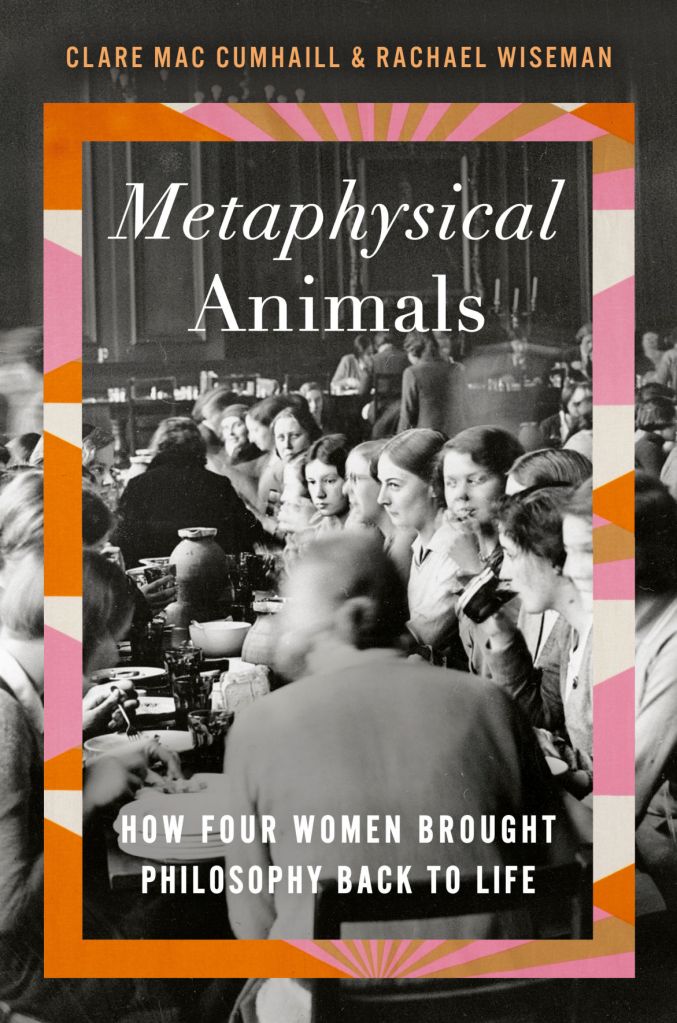‘Metaphysical’ brings women’s experiences to life
Published 12:15 am Saturday, February 4, 2023

- Cover
“Metaphysical Animals: How Four Women Brought Philosophy Back to Life,” by Clare Mac Cumhaill and Rachel Wiseman. New York: Doubleday, 2022. 398 pages, $32.50 (Hardback).
Only a couple of philosophers could look back to World War II and think, “Ah, that’s when women came to the fore in philosophy!” But Clare Mac Cumhaill and Rachel Wiseman did just that, and the case they present makes an engrossing read. Both authors are also strikingly good writers. They needed to be because the job they set themselves was daunting.
Trending
Metaphysical Animals is not only a group biography of four wildly different women, but a chronicle of their thinking spread out against a backdrop of the dark, exciting war years in England; their colleagues, adversaries, teachers, and lovers; and the unpromising state philosophy was in when they came to Oxford and began working to correct it.
During the 1930s young British philosophers like A.J. Ayer rejected the value-affirming traditions of the past and adopted a “scientific” approach, arguing that the only valid assertions were ones that could be empirically tested and expressed as pseudo-mathematical formulae. Any statement involving value judgements—”Torture is wicked,” “Martha is beautiful”—rested on beliefs, not facts. Since one set of unverifiable beliefs was no better than another, they said, such statements were useless. Old, musty concerns like truth and beauty and the ultimate nature of reality were dead. “Philosophy,” as Ayer put it, “has come to an end.”
All this changed in two ways with the war’s onset. First, the young Oxford men, including Ayer, went off to battle, leaving the colleges to women, conscientious objectors, and older men with more traditional ideas. And second, as the details of Nazi rule filtered back to England, the new philosophy’s limits became glaringly apparent. How do you reduce the horrors of the death camps? Surely if it’s to be any use, philosophy must do better.
Into this breech, the authors’ four young women charged. Mercurial Iris Murdoch, the most famous of the group, eventually produced 26 acclaimed novels, five philosophical treatises, and two books of poetry. Before dying of Alzheimer’s in 1999, she was made Dame Commander of the Order of the British Empire. Tall and awkward Mary Midgley, commonsensical behind her round Coke-bottle glasses, was the only one who never feuded (or carried on an affair with) the other three. Elegant, intuitive Philippa Foot came from country gentry but spent years worrying about her scanty education as a girl. Elizabeth Anscombe arrived roughshod and trousered and ready to do philosophical battle with anyone. When university authorities told her she needed to wear a skirt while lecturing, she donned a skirt over her trousers.
Metaphysical Animals offers a deeply interwoven account of these women’s time at Oxford and beyond. The first half of the book is especially exciting as they form allegiances and enmities amid the swirl of university life. Teachers like Donald MacKinnon and Heinz Cassirer are revered. (In MacKinnon’s case, Iris took things far beyond reverence.) Others such as Ayer’s disciples are disdained. The air crackles with intellectual ferment as combative arguments are launched and countered in lecture halls, pubs, and unheated flats amid an atmosphere of cigarette smoke, strong drink, and a healthy dash of lubricity (Iris again).
While the book’s philosophical niceties are sometimes hard to follow, its main thrust is unmistakable. Inspired by the émigré philosopher Ludwig Wittgenstein and thinkers like Plato, Aristotle, Kant, and Thomas Aquinas, each woman rejected the airless “objectivity” of Ayer and his iconoclastic crowd to make room for moral and ethical values. Ideas, they held, don’t occur in a lab. They are shaped by history—for instance, the blatant evil of Nazi atrocities—and play out in relation to non-physical webs of meaning and values crafted by cultures and communities and families. Taking these complicated relationships into account, ethical and moral values—imperfect as they are—are our only guides. Right and wrong may be hard to pin down in scientific language, but they are not nonsense. People constantly use such terms and try to live by them. Humans, the women said, are inherently “metaphysical animals,” compelled by nature not only to recognize what is but to judge its value. As Philippa put it, referring to Nazi Germany, “We want to say we are right and they are wrong.”
Trending
However, philosophy is only one of the authors’ interests. The book teems with famous persons who crossed paths with their four subjects, luminaries like C.S. Lewis, Dylan Thomas (Iris pub-crawled with him), Margaret Mead, T.S. Eliot, Jean-Paul Sartre, and Simone de Beauvoir. Wartime England swarmed with displaced Continental intellectuals, especially around Oxford, where certain neighborhoods began to sound like the crossroads of central Europe. Many of these learned refugees figured in our philosophers’ stories as well.
Then too, the war itself is a character for much of the book, brought alive by vivid snapshots of a Britain where virtually everything was rationed, unlit cars crept around blindly after dark, and friends met behind blackout curtains in sparsely furnished flats, while daytime London was overrun with butterflies. Its caterpillar-eating birds, like so many of its children, had been driven to the countryside to escape the Blitz.
Details like these along with the intertwined lives of four brilliant women who shared lodgings, clothes, and lovers as readily as philosophical insights make Metaphysical Animals a rewarding read for anyone, philosophy-lover or not. The text is further enlivened with a wealth of photographs and facsimile letters and drawings that help bring these women’s times and experiences memorably to life.
– Reviewed by Joe Glaser, Western Kentucky University English Department.






